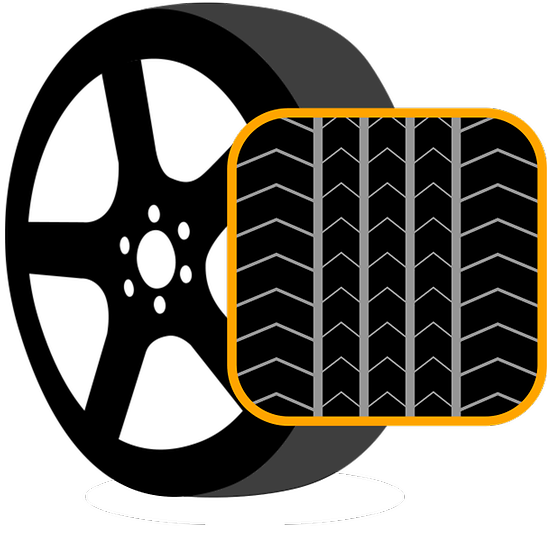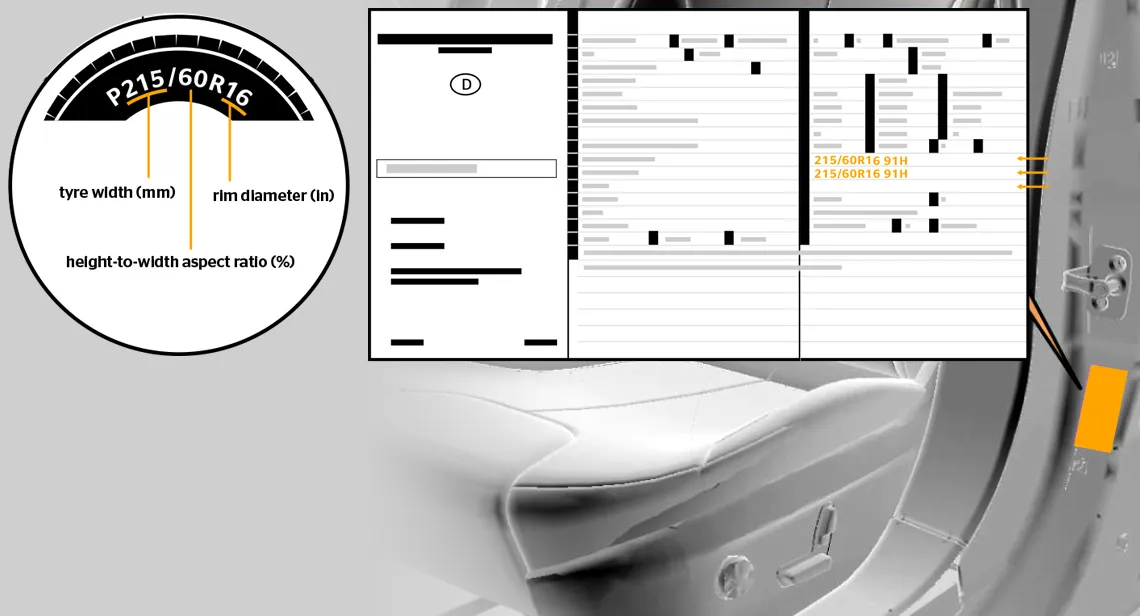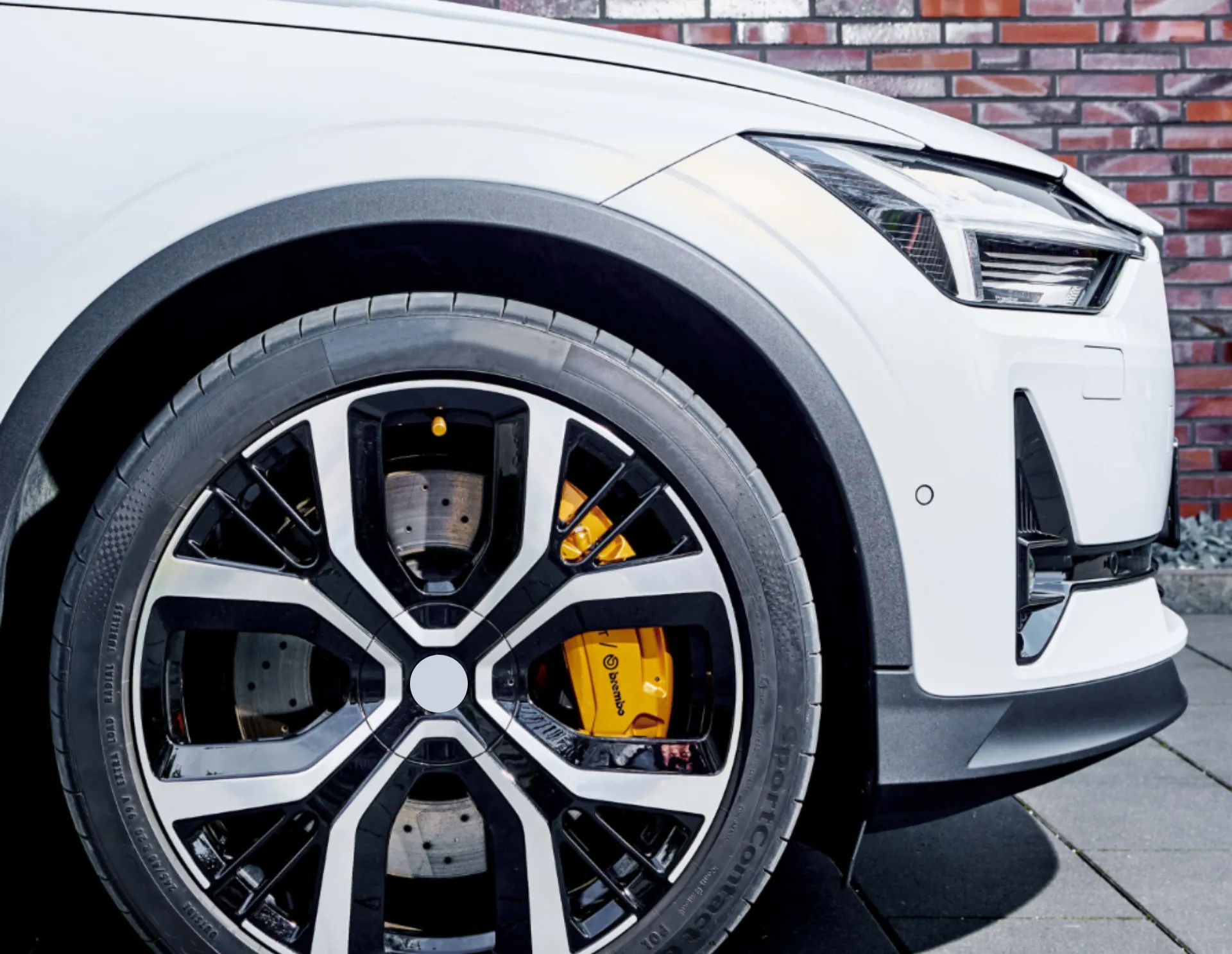Tire Tread
Tire Tread
Tire tread patterns and their numerous applications
Quick facts: Tire treads of several kinds
- Symmetrical tire tread patterns provide a smooth driving experience, excellent directional stability, and reduced rolling resistance.
- Directional tire tread patterns offer great anti-aquaplaning protection, excellent handling in snow and mud, and excellent road-holding at high speeds.
- Asymmetric tire tread patterns provide great handling, high curve stability, and wet traction.
- Avoid combining tire tread patterns wherever feasible to preserve maximum safety and performance.
Tire tread pattern with directions

A directional tread pattern tyre is only intended to move forward in one direction. It features lateral grooves that intersect in the center of the tyre tread to form an arrowhead shape. Yet, it serves a purpose other than being aesthetically pleasing. By displacing water more efficiently across the tread pattern, the V-shaped grooves are better equipped to withstand aquaplaning (hydroplaning) at high speeds.
Another advantage of directed tread is increased grip, which allows for better handling in snow or mud. As a result, a decent all-season or winter tyre will almost certainly include a directional tread design. The increased traction is particularly beneficial for high-performance tyres.
Key features:
- High protection against aquaplaning
- Excellent handling on snow and mud
- Very good road holding at high speed
The important thing to understand about directional patterns is that tyre rotation gets a little more difficult. They can only be turned vertically, such as from the front to the back of the automobile; otherwise, the pattern will be orientated incorrectly when attached to a wheel on the other side of the vehicle. It would render the tyre tread's benefits ineffective.
The arrow indicator etched on the sidewall of the tyre can help you keep track of the right orientation. It's heading in the same direction as the pattern, in the desired direction of movement.
Why are they so dissimilar?
Because a tread pattern is a one-of-a-kind design that improves a vehicle's grip and handling under certain driving circumstances. You might identify a tyre brand by the footprints it makes on the road, much as in a mystery fiction.
Each tyre tread is made up of four parts:
- Ribs are elevated sections of the tread pattern composed of tread blocks.
- Grooves are deep grooves that go around the tyre circumferentially and laterally.
- The elevated rubber segments that make contact with the road surface are known as tread blocks.
- Sipes are narrow, thin slots that have been formed into the tread blocks.
The ribs, grooves, tread blocks, and sipes, when combined, may be organised in a unique pattern to adjust the tire's performance in crucial areas such as noise, handling, traction, and wear.
As a result, tyre manufacturers may create tread patterns to satisfy specific driving demands such as wet braking, dry handling, aquaplaning (hydroplaning) resistance, and traction on ice and snow.
How many different tyre tread designs are there? There are quite a few. But, in general, three types of tyre tread pattern may be distinguished. Which one is in your car?
Tire tread design with symmetry
The most common design is symmetrical, which is appropriate for passenger car tyres but not for high-performance applications. Tires with this design include continuous ribs or independent tread blocks throughout the whole face of the tread, and the pattern is the same on both half of the tyre.
Key features:
- Smooth driving
- High directional stability
- Low rolling resistance
Tires with symmetrical designs give the vehicle owner the maximum tyre rotation freedom without impacting day-to-day performance. They're also quiet, durable, and fuel efficient. They are, however, less responsive to changing road conditions. Consequently, while symmetrical designs provide consistent traction on dry roads, they are less efficient in wet situations than other tyres.
Asymmetric tread pattern on tyres

An asymmetric pattern tyre has two distinct tread designs, one on the inside and one on the outside halves of the tyre. It appears strange, yet each half has a certain purpose.
The inner tyre tread is in charge of water displacement and aquaplaning prevention (hydroplaning). The outside tyre tread contains strong tread blocks for increased lateral stiffness, resulting in increased cornering grip and lower interior noise when driving on dry roads. Because of this mix of characteristics, asymmetrical tyres are extremely desirable for use on ultra-high-performance vehicles.
Important aspects include:
- Good maneuverability
- Excellent curve stability
- Excellent traction in wet situations
Tire rotation, like directional tyre patterns, must be done with caution. The options here include vertical rotation between front and back. Indications on the sidewall help direct proper installation.
Never combine tyre tread patterns.
When purchasing new tyres, avoid putting multiple types, sizes, or brands on the same vehicle. To preserve maximum performance characteristics, source the same brand and type of tyre as the ones you already have on your wheels.
Another thing to remember when replacing tyres is that replacing a pair is safer than replacing a single tyre. The most recent tyres should be installed on the back axle, while slightly worn tyres should be installed on the front axle.
If this is not practicable, drivers should make sure the new tyre has the same tread pattern as the other tyre on the same axle. Mixing the patterns can reduce your car's handling qualities and may possibly be harmful.
Copyright © 2024 Continental Middle East DMCC All rights reserved.







